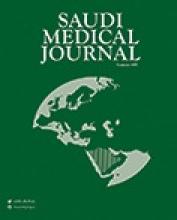Abstract
OBJECTIVE: To investigate the radiosensitizing effects of dihydroartemisinin (DHA) and its underlying mechanisms in cervical cancer cells.
METHODS: This experimental study was conducted between May 2009 and August 2012 in the School of Radiation Medicine and Protection, Soochow University, Suzhou, China. HeLa and Siha cells were assigned as the control group and DHA as treated group. The 3-(4,5-dimethylthiazol-2-yl)-2,5-diphenyl-2H-tetrazolium bromide (MTT) assay, clonogenic assay, cell cycle analysis, and apoptosis analysis were carried out in 2 cell lines of both groups.
RESULTS: The inhibitory effect of DHA on the HeLa and Siha cell lines was dependent on both concentration and time. Dihydroartemisinin increased the radiosensitivity of HeLa cells, but not of Siha cells. Apoptosis and the gap2/mitosis (G2/M) phase transition induced by x-irradiation was enhanced by DHA treatment in HeLa cells. Irradiation, combined with DHA, decreased Wee1 expression while increasing Cyclin B1 expression in HeLa cells.
CONCLUSION: Dihydroartemisinin potently abrogates G2 checkpoint control in HeLa cells. It can relieve the G2/M arrest induced by irradiation; thus, it can be used as an effective radiosensitizer, which will probably promote the entry of more irradiation-damaged cells into mitosis.
- Copyright: © Saudi Medical Journal
This is an open-access article distributed under the terms of the Creative Commons Attribution-Noncommercial License (CC BY-NC), which permits unrestricted use, distribution, and reproduction in any medium, provided the original work is properly cited.






